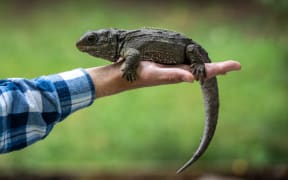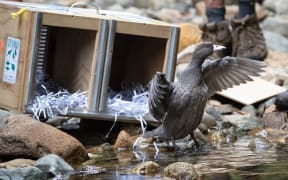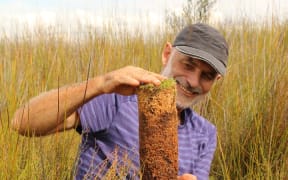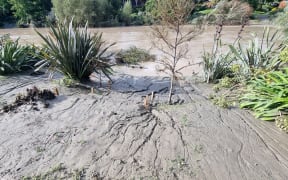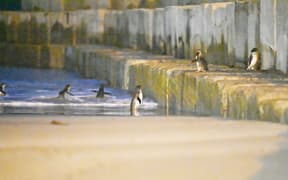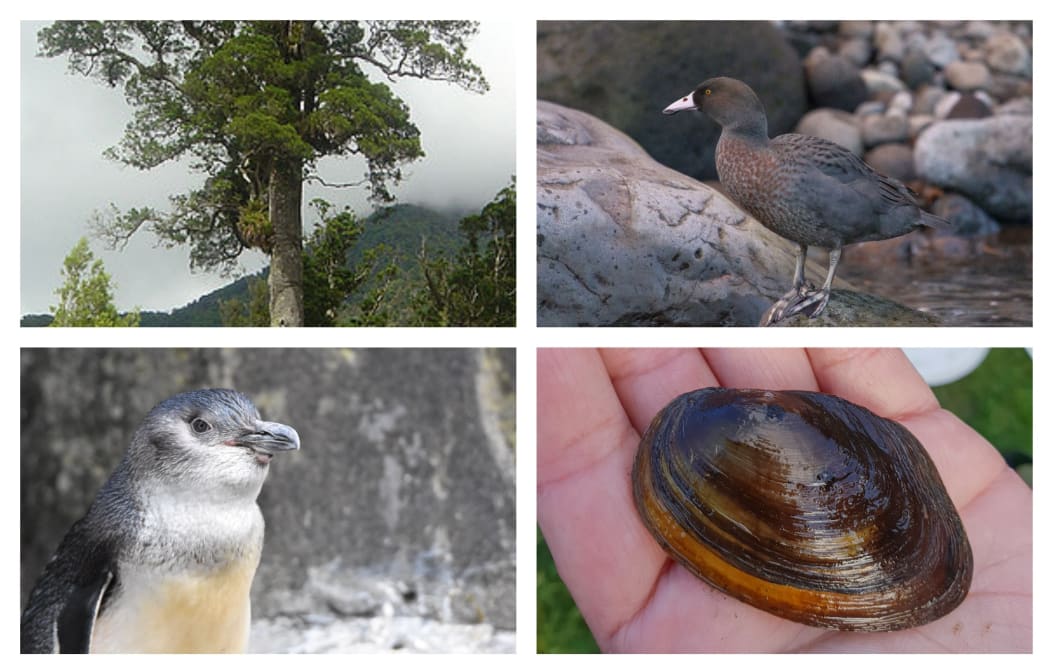
Cyclone Gabrielle and its effects on the environment have created a range of challenges for many native species. Photo: Composite (credits below)
Silt is clogging the rivers, birds are in the wrong place. And why are there trout in the drains?
The effects of Cyclone Gabrielle have been devastating, and not just for the human population - native species have been the lesser-known victims of the February storm.
In Hawke's Bay, eels were found in ditches hundreds of metres from any river, godwits were interrupted during their most crucial feeding time of the year, and penguins are still swimming in circles through murky estuaries.

Whio - blue duck Photo: Tony Green
Department of Conservation senior ranger Denise Fastier, based in Hawke's Bay, said her first thought was of a lost, and probably confused, blue duck.
"We were getting reports of wildlife in really unusual places," she said. "We had a whio turn up in urban Hastings, and they would have been struggling finding places they could feed or that they could shelter."
Little blue penguins also had a rough time. The cyclone hit right in the middle of their moulting period, when they normally lost all their waterproof feathers.
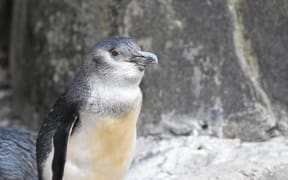
A kororā - little blue penguin Photo: Supplied / Spencer McIntyre
The silt, which had been washed down from the hills in huge quantities, was still lingering, making it hard for animals and fish to see food.
"There was a little blue penguin swimming around in the daytime, which you don't normally see either, in the outfall of the estuary. The water was just so brown," Fastier said.
"I just looked at it and thought, that poor thing, if it's trying to find food it's not going to have much luck unless it's very good at Braille."
And then there were the godwits, wading birds which travelled huge distances to their breeding grounds in the Arctic.
Fastier said in February that the migratory birds were working on increasing their body weight by half again to survive the long journey.
"There was no food anywhere, and I think one of the impacts of that is just going to be a few more of those waders that didn't make it back. Some of them would have tried and not made it, but there will be a lot that probably didn't even get to a weight where they thought they could try."
What has contributed to the impact on our native species?
How did we get here? Could the way we've altered our environment have worsened the cyclone's effects?
Forest and Bird freshwater advocate Tom Kay thought so.
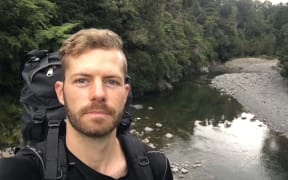
Tom Kay Photo: Supplied
"Ninety percent of our wetlands across the country are gone, and they acted as sponges which slowed water down in the landscape," Kay said.
"We've got rid of a lot of our native forest on our hillsides which means that soil doesn't stay on the hill anymore, so all of that silt and sediment has come down."
"We've constrained our rivers massively, we've tried to make them into big drains to take water out to sea basically as fast as possible... and we've encroached on them, because we want to use that land to grow things."
Meanwhile, we moved into floodplains and put ourselves in harm's way.
The biggest hazard during Cyclone Gabrielle was the inability of rivers to cope with such a large amount of water, and the flooding left behind silt.
Crevices between rocks at the bottom of rivers are habitats for fish and macro invertebrates, creating nooks for them to hide and feed. Now, those gaps were filled with silt.
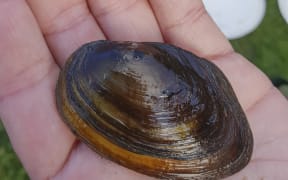
kākahi - freshwater mussels Photo: Linton Miller
And speaking of things filled with silt...
"A friend in Auckland who has a stream that runs though their property [has been] regularly going out in the evenings and spotlighting," Kay said.
"And they've found a whole bunch of kākahi, freshwater mussels, unfortunately lots of them dead. They've opened them up and they're filled with silt."
The role of science in the following months would be to map, monitor and count the ways natural environments had changed.
Hawke's Bay Regional Council freshwater scientist Dan Fake said in some rivers, they'd found a total absence of macroinvertebrates, creatures that were normally a good indicator of stream health.
But in others, ecosystems were recovering faster than expected.
Fake said it was important to remember things were not all bad. "These things have evolved over millions of years, and they will recover."
A lot of fish species were migratory, such as whitebait and bully species. Their life cycle meant their eggs were washed out to sea, and the juveniles would swim back up rivers to breed.
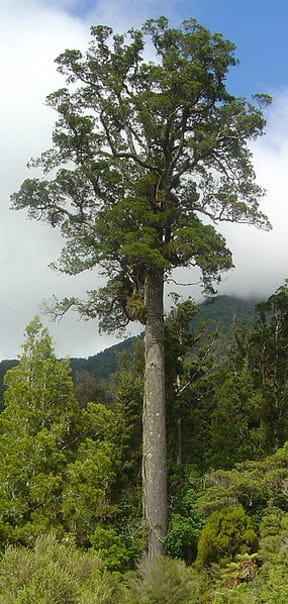
A mature kahikatea tree Photo: Public Domain/ Alan Liefting
Come spring, Fake said there was likely to be another pulse of young fish making their way back up the rivers, and by next summer, rivers would once again be teaming.
Fastier said one positive was that the flood had recharged the region's aquifers.
"We've been in drought for years and years and years and we've got, for example, a stand of kahikatea in central Hawke's Bay that we've been watching dying - hundred-year-old plants, and there's nothing we can do about it. They're dying because the water table got down to an extent where they couldn't access it," she said.
"They've got a chance of recuperating now."
